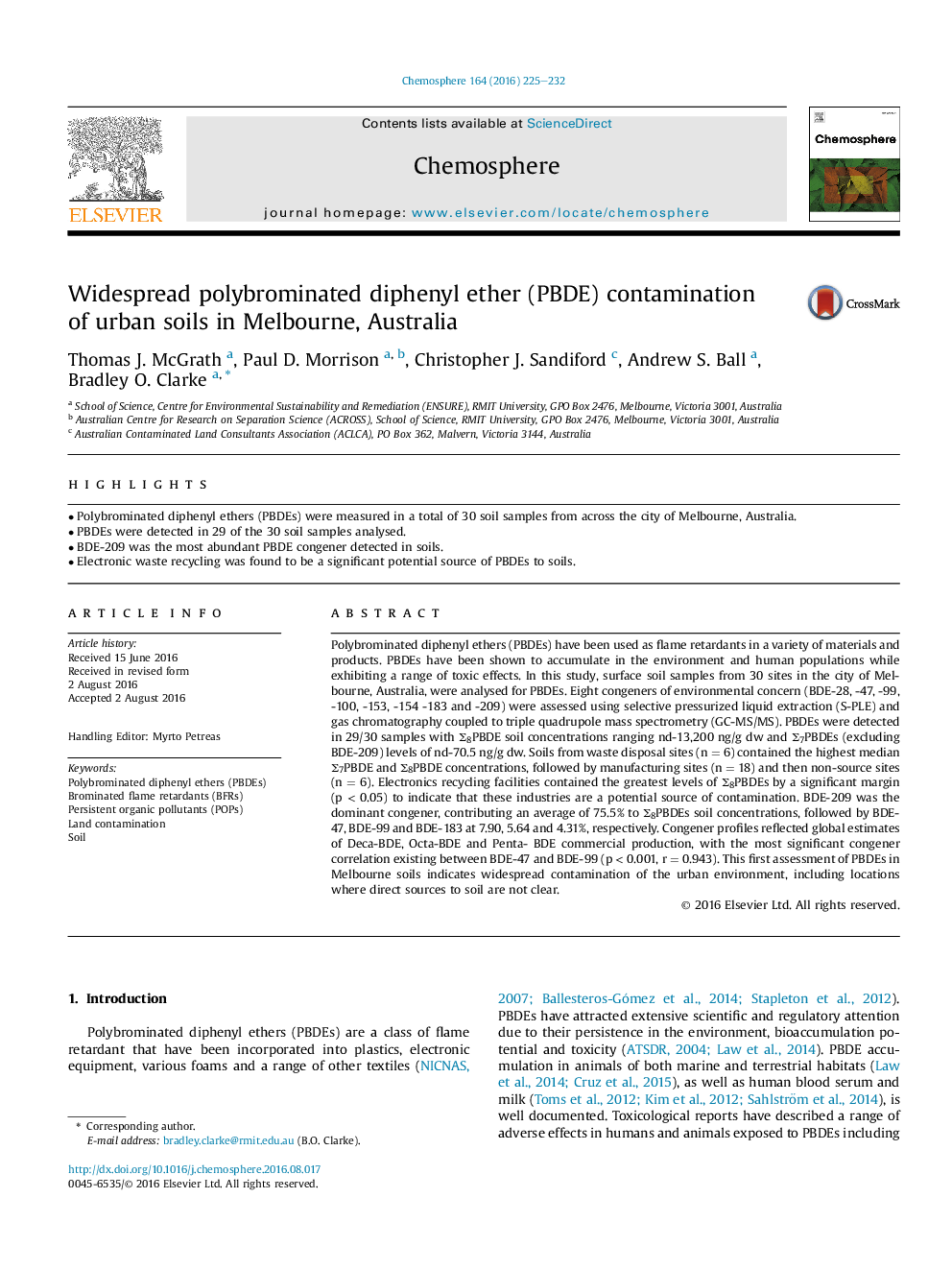| Article ID | Journal | Published Year | Pages | File Type |
|---|---|---|---|---|
| 6306017 | Chemosphere | 2016 | 8 Pages |
Abstract
Polybrominated diphenyl ethers (PBDEs) have been used as flame retardants in a variety of materials and products. PBDEs have been shown to accumulate in the environment and human populations while exhibiting a range of toxic effects. In this study, surface soil samples from 30 sites in the city of Melbourne, Australia, were analysed for PBDEs. Eight congeners of environmental concern (BDE-28, -47, -99, -100, -153, -154 -183 and -209) were assessed using selective pressurized liquid extraction (S-PLE) and gas chromatography coupled to triple quadrupole mass spectrometry (GC-MS/MS). PBDEs were detected in 29/30 samples with Σ8PBDE soil concentrations ranging nd-13,200 ng/g dw and Σ7PBDEs (excluding BDE-209) levels of nd-70.5 ng/g dw. Soils from waste disposal sites (n = 6) contained the highest median Σ7PBDE and Σ8PBDE concentrations, followed by manufacturing sites (n = 18) and then non-source sites (n = 6). Electronics recycling facilities contained the greatest levels of Σ8PBDEs by a significant margin (p < 0.05) to indicate that these industries are a potential source of contamination. BDE-209 was the dominant congener, contributing an average of 75.5% to Σ8PBDEs soil concentrations, followed by BDE-47, BDE-99 and BDE-183 at 7.90, 5.64 and 4.31%, respectively. Congener profiles reflected global estimates of Deca-BDE, Octa-BDE and Penta- BDE commercial production, with the most significant congener correlation existing between BDE-47 and BDE-99 (p < 0.001, r = 0.943). This first assessment of PBDEs in Melbourne soils indicates widespread contamination of the urban environment, including locations where direct sources to soil are not clear.
Keywords
Related Topics
Life Sciences
Environmental Science
Environmental Chemistry
Authors
Thomas J. McGrath, Paul D. Morrison, Christopher J. Sandiford, Andrew S. Ball, Bradley O. Clarke,
